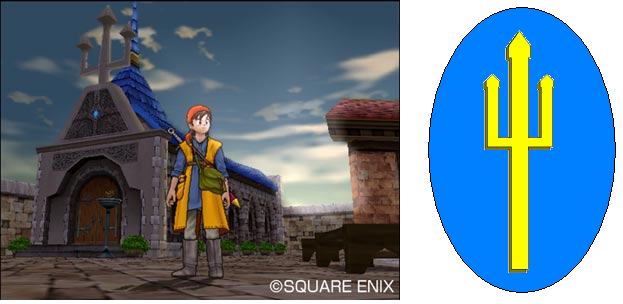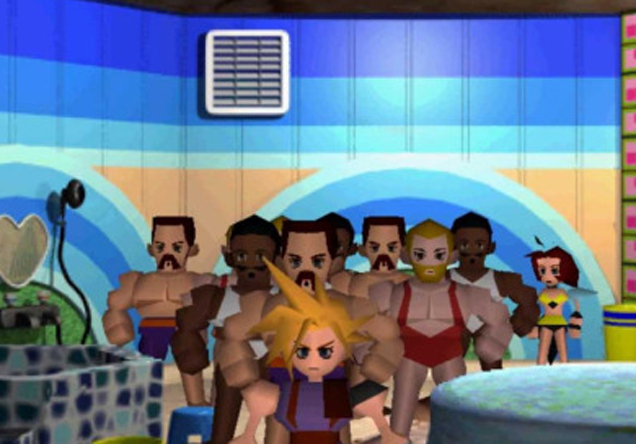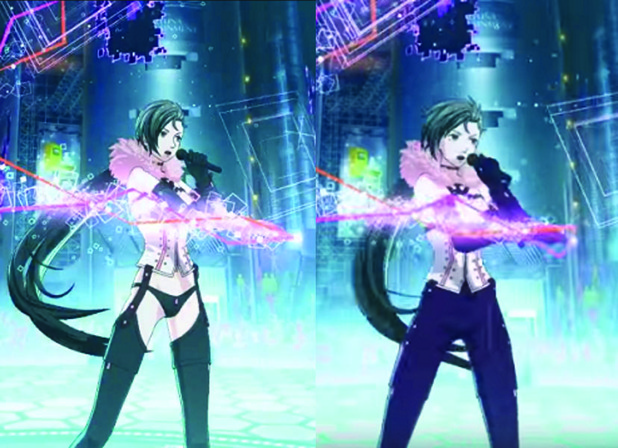Last updated on July 21, 2016
Part 1
Localization does not just mean “translation”, however – it can also mean changing the cultural context, language, or particular details of a game in order to match different cultural sensibilities. Yes, I realize I used the word “cultural” twice there, but that’s about as clear as that sentence is about to get.
Often, video games do not come from Japan to America as an unchanged product. Many, many minor changes are made as they cross from East to West, and not just in the language sense. For example, Nintendo tries to stray as far as possible from any sort of real-life religious references in their games. I’m not sure whether that’s a company policy, but they stuck to that rule from the early days of the NES to today. Dragon Quest, which we used to call Dragon Warrior in the States, is probably the most prominent example of this. When Nintendo made the decision to publish the game, they made sure to scrub the vaguely Medieval/European setting of anything that could even vaguely resemble Catholic Christian imagery, and that included the churches of the Goddess where you resurrect your characters.

All in all, we could consider that a minor change – businesses seek to remove any sort of offensive content in their video games to appeal to the widest audience possible, unsurprisingly. The rise of the religious right certainly made any company localizing products quake in their boots, fearing moral outrage might impact sales. Imagine if a parent saw their child playing Dragon Warrior, a big cross emblazoned on a church building, and seeing them resurrect their party members using foreign religious rites! No matter how internally consistent the metaphysics of that game are, I can’t imagine that ending well for anyone (I mean, seriously, people still think Pokemon are demons, so we’re not that far removed from those days).
Thus, changes are usually made to appeal to the widest possible audience. At first, this comes in the very tiny changes like in Dragon Quest, but as video games earned bigger budgets, better graphics, and more complexity, the lines between “straight conversion” and “big changes” becomes blurred. The Final Fantasy series is usually the best example of this, partly because they barely make any changes at all except in the translation of text, speech, and the like. Because the universe is so different and strange, most people just sorta roll with the game being a wonderfully strange fantasy world. Even so, if there’s something that could cause a downturn in sales or some controversy, it usually gets changed before hitting Western shores – I’m surprised the whole cross-dressing thing made it into Final Fantasy VII, but I guess people thought it was funny so it mostly got to America untouched.

Different companies also approach their games very differently, depending on their target audience. Just for example, Shin Megami Tensei’s Persona subseries (at least the most recent entries) makes no attempt to disguise the setting being in Japan with Japanese high school students. The language even contains those ever-lovely Japanese honorifics to lend authenticity to the setting. A lot of people find this annoying, mostly because we don’t really talk in terms of seniority, but it does mean the game remains mostly true to the original work in the original language.
Where things get more iffy is when things devolve into “censorship”, and this is a bit of a heated topic. Sometimes, companies just straight up remove content in the games. This occurs when they wager that this stuff is more likely to offend Western players than help them enjoy it, and so they cater to our cultural instincts on certain parts of the game. Tokyo Mirage Sessions #FE is the most recent example of this phenomenon, which earned minor outrage on some sections of the Internet. So, fans felt motivated enough to create their own version of the game to “fix” what Nintendo and Atlus changed to get a T for Teen rating. Was it worth it?
I guess it depends on whether or not you miss these things in particular:
– Reverted costumes back to Bikinis, also changing the menu icons back and their original names and descriptions.
– Completely redid chapter 2 and a few other minor parts of other chapters to return references to Gravure Modelling, this also uses the original voice files instead of re-recorded ones.
– Fixed any map changes relating to pictures in dungeons that were changed.
– Swapped the English files out for Japanese versions for retranslated files.
– Healing points no longer come in envelopes. (Spelling error by the localisation team where envelops was spelled envelopes)
– Changed Profiles to reflect the character’s real ages and change back references to Gravure Modeling.
– Reverted any censored prerendered Cutscene files.
To explain: TMS #FE uses Japanese idol culture as a launching point for its weird take on the Shin Megami Tensei formula. So, most of the characters are dressed in over-the-top, scantily clad outfits to fit with the theme of the game – it is appropriately outlandish, as the screenshot below shows:

A problem for Nintendo probably came from the age of the characters – some of them were hitting the 16 year old mark, and that’s pretty young for characters wearing clothing like that. While the age of consent in Japan is technically 13, most prefectures set it as 18 by law, so it’s not at all dissimilar to the United States in that regard (also, weird fact: the age of consent in America is actually 12, but state law puts it without restrictions to 16-18 in almost every state). So, they bumped up all the ages and then added some clothes – I can’t imagine this affects the story much, if at all, but it’s still notable nonetheless. Japan is simply more accepting of sexualized kind of media, while they crack down more heavily on violence, while America often takes the opposite tack – hence, the changes.
Probably the bigger issue for localization comes from the inclusion of gravure modelling (it’s a game mechanic too!). I imagine the actual thing in itself wasn’t too scary, but the age combined with taking sexually suggestive poses of girls in that age group looked like a losing combination. The idol concept does apply here too, of course, but from an American perspective it would seem highly offensive for the vast majority of people playing the game. After all, a gravure is a Japanese female model who primarily models in mgazines, especially those marketed to men, photobooks, or DVDs. Gravure idols emphasize their sexual attractiveness and often model in swimsuits. So, in a game with (for the United States) girls close to underage status, the idol connection wasn’t enough to keep it in the game (nor the typical anime bathhouse scene).
So, do these changes make the game substantially better or worse? I honestly can’t say for sure. There’s plenty of business reasons for them to do it, and plenty of reasons for us to complain about censorship or whatever. What’s the right way to go about this, though?
